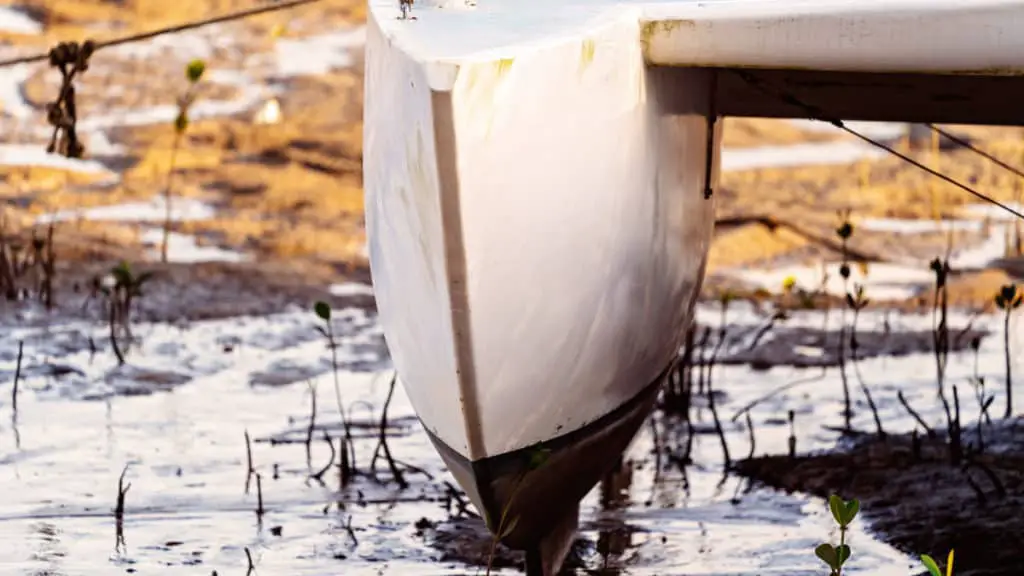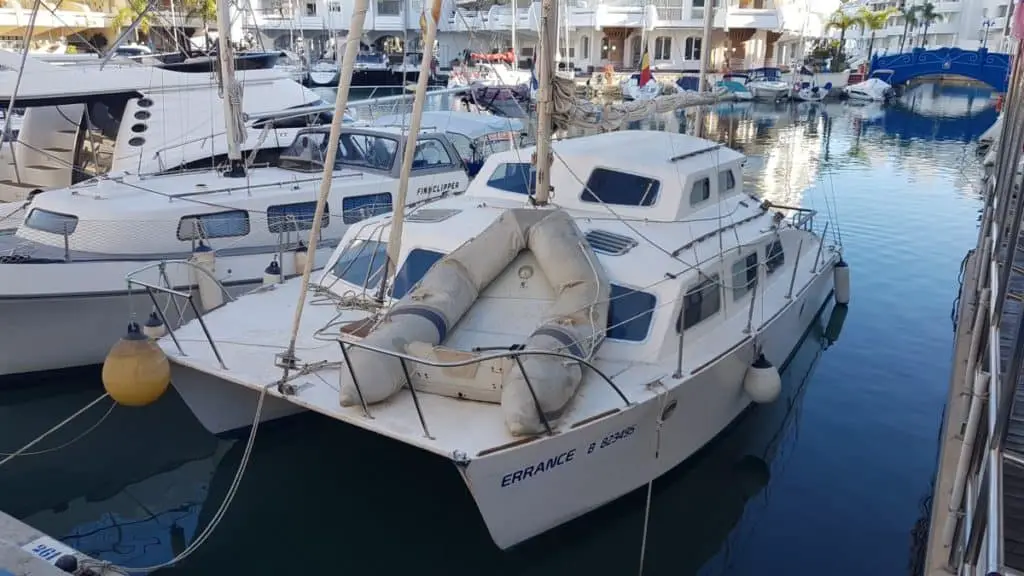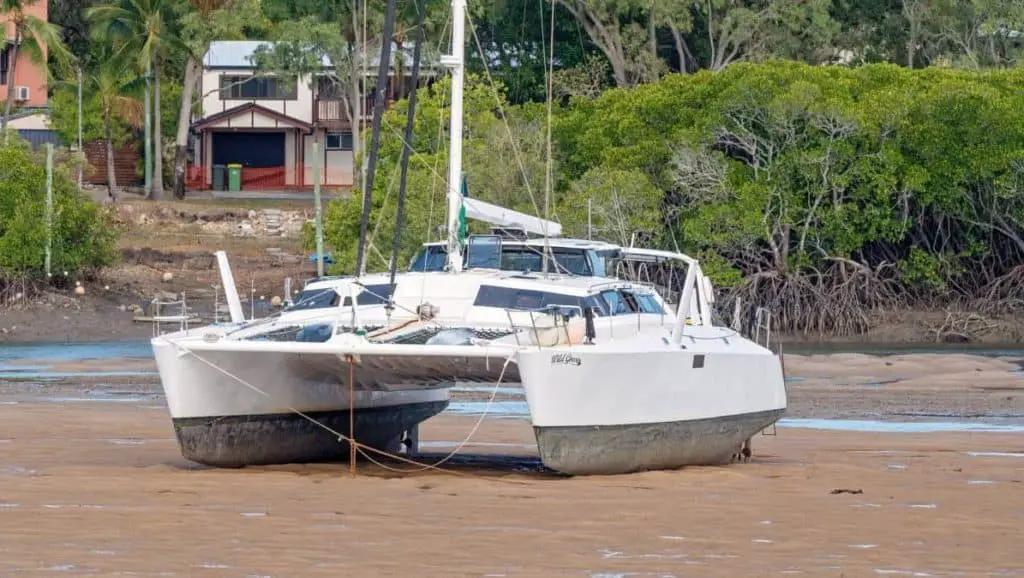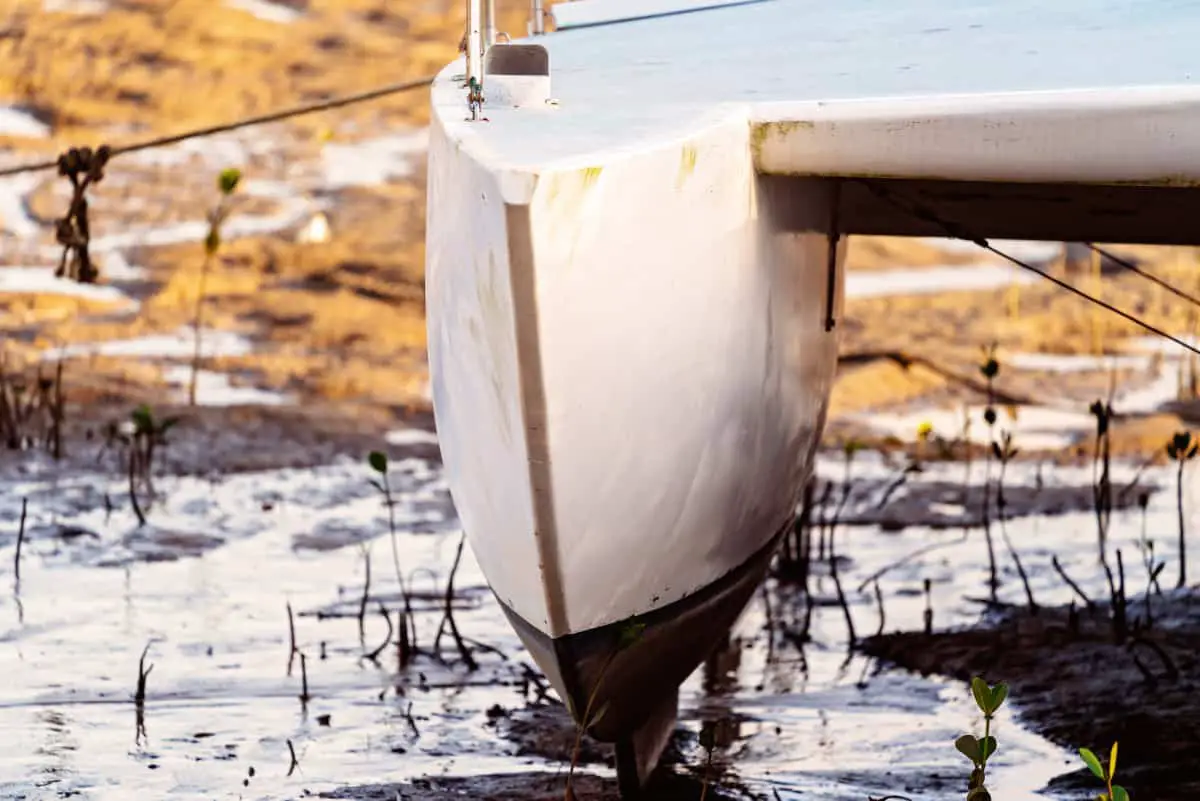As an Amazon Associate, we earn from qualifying purchases. We may also earn commissions if you purchase products from other retailers after clicking on a link from our site.
A few years ago I had an incident with my monohull, it was just outside a marina in Bimini Bahamas, we got a line stuck in the propeller and it made a hole the size of a grapefruit. Water was flowing into the boat like a firehose and we were on our way to meet Neptun. After we sorted that incident out with some intensive mid-water repairs I found a new passion for understanding what makes a boat float and I thought it answer some questions concerning why catamarans float!
Catamarans float due to the positive buoyancy in their two hulls, this is achieved through a construction method called sandwiching. This method makes every single piece of the hull float individually and in contrast to monohulls, keeps the boat afloat in the event of a hull breach.
Let’s get right into the details!

Why Does a Catamaran Float?
A catamaran floats because of the same reason as everything else floats. That is;
As long as the displacement (the weight of the water that is being pushed downwards by the boat) is larger than the weight of the vessel, it will float. So when I got I hole in my boat and we started taking in water, the boat was getting heavier and we were at the same time losing buoyancy.
In other words:
If the upward force of the bouyancy is greater than the downward force of the boat, the boat floats.
This means that small and heavy objects (high density), such as rocks or lead will sink, and large and light (low density) objects will float.
This is what is called the Archimedes principle.
If you compare the design of a monohull to a cat, the monohull uses a lead keel (that weighs several tons) to keep the boat upright while a catamaran derives its stability from the two lightweight glass fiber hulls separated wide apart.

Whats the Differences Between a Catamaran and a Monohull?
Catamarans are lightweight compared to monohulls, for the same waterline length the cat will be 5-10 tons lighter. this means the cat doesn’t have to displace as much water to still be afloat. this reduces drag and increases speed.
Catamarans also employ foam-cored hulls. instead of having solid fiberglass (higher density, more weight), the hulls will be made of a sandwich material which consists of; 1 layer of epoxy, 1 layer of core (foam, balsa, or otherwise low-density high strength material), and 1 layer epoxy.
This construction method gives the boat something that is called positive buoyancy. Positive buoyancy means that every single piece of the hull will float on its own.
That is, even if the boat gets ripped into little pieces, the little pieces will still float around and not sink. In comparison to a high-density material such as only epoxy.
In some ways, this can be compared to a balloon, either you fill it with air and it will fall(the air inside the balloon has a higher density than the air on the outside), or you fill it with something that has less density than the air that will be surrounding it and make it lift. So you fill it with helium and it lifts. Same principle!
So what happens if there is a breach in the hull and water starts coming into the boat? Well, the short answer is that the catamaran will fill up with water in the hull that has been breached while painting the other hull fully afloat. and since we know that the hulls have positive buoyancy the compromised hull will only sink until neutral buoyancy once again has been achieved.
But this time with one hull semi-submerged. the same thing will happen if both hulls are breached, which is incredibly rare.

Why Does a Catamaran Sink?
There is a caveat, in theory, if the boat is so heavily loaded that it has very little spare buoyancy, such as filling it with lead (for some reason), then if the hulls are breached there might not be enough buoyancy to keep it afloat and it will sink.
This is very theoretical, before you would ever find yourself in a situation like this your boat will be so heavy that it probably is impossible to steer and will sit very low in the water. Let’s not even speak about speed losses.
Why Do Catamarans Capsize?
A capsize is when a boat is faced into the water in a way that it is not intended, and is unable to return to its sailing position.
Catamarans can capsize in two ways, either a huge breaking wave will hit its beam or the cat will out surf a wave and crash into the next wave making it pitchpole and flip forward.
These situations are extremely rare with modern catamaran design but if you want to learn more I suggest you read my in-depth explanation on why and how catamarans capsize, in this article I explain the physics behind capsizing and how common it is compared to monohulls and trimarans.
Catamaran Hydrofoils
Catamaran hydrofoils are basically like airplane wings underwater. they create a lower pressure in the topside of the wing making the underside push the boat upwards. this force can be so big that the entire boat rises out of the water such as can be seen on racing cats.
This reduces almost all underwater drag (which is one of the biggest speed limiting factors) and makes these boats ridiculously fast.
Final Thoughts
This is of course a simplification of how boats work, but everything after this is mainly details. So if you understand this part then you have understood 80% of what is needed to safely operate and take care of your vessel.
Stay safe out there!

